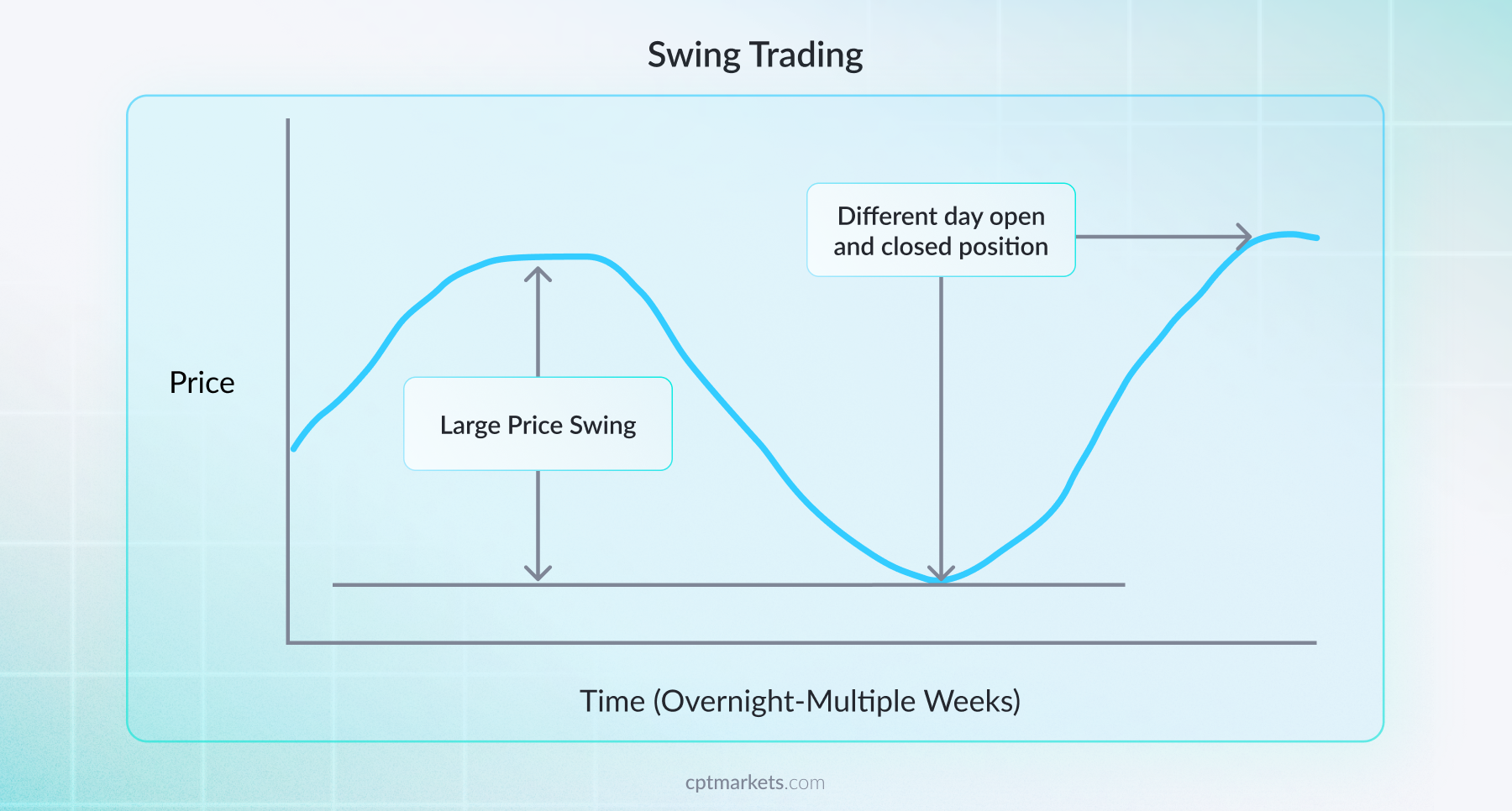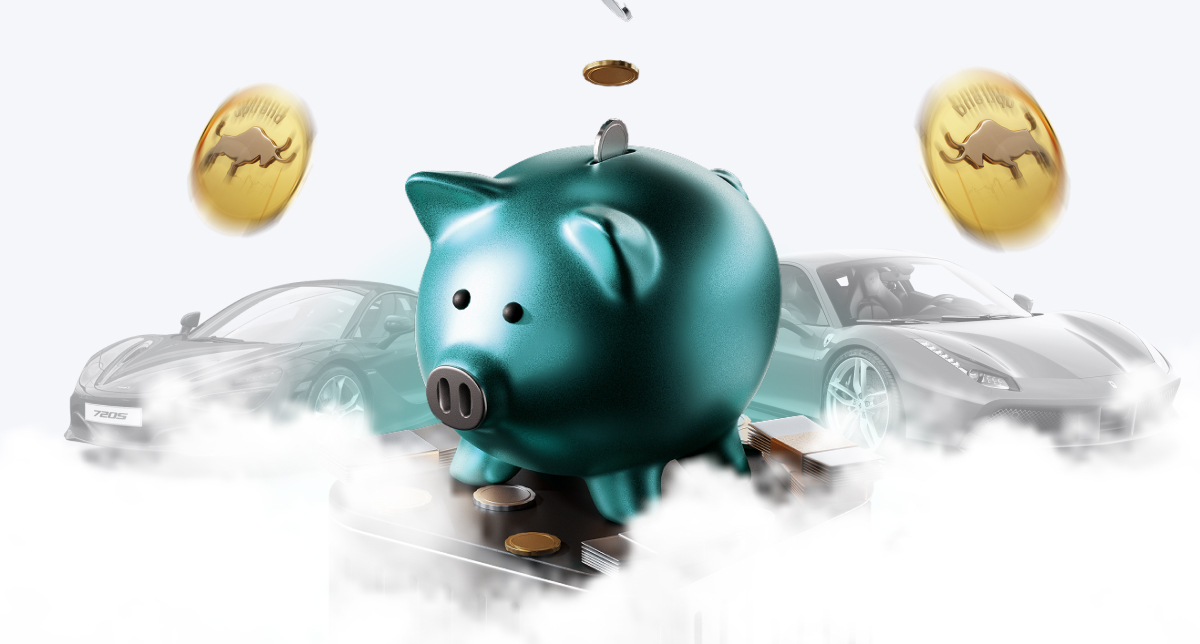What is the highest currency in the world?
May 20
Although the US dollar (USD) is often considered the strongest currency in the world due to its role in international trade, when considering the exchange rate against the USD or its value against other currencies, the USD is not the most valuable currency. Below is a list of the 10 highest currencies in the world as of 2025. Let's find out why they are so valuable in the article below with CPT Markets.

Top 10: Canadian Dollar (1 CAD ≈ 0.73 USD)
CAD is the official currency of Canada, the 9th largest economy in the world, famous for its rich natural resources and strong banking system.
Introduced in 1858 to replace the Canadian pound. After World War II, CAD was pegged to the USD at a specific exchange rate and then switched to a floating regime in 1970.
Thanks to its abundant natural resources and strong banking system, CAD is one of the most traded G10 currencies globally. In addition, CAD is now considered one of the world’s most stable and reliable currencies, frequently selected by investors as a safe haven asset alongside the USD, CHF, and JPY.
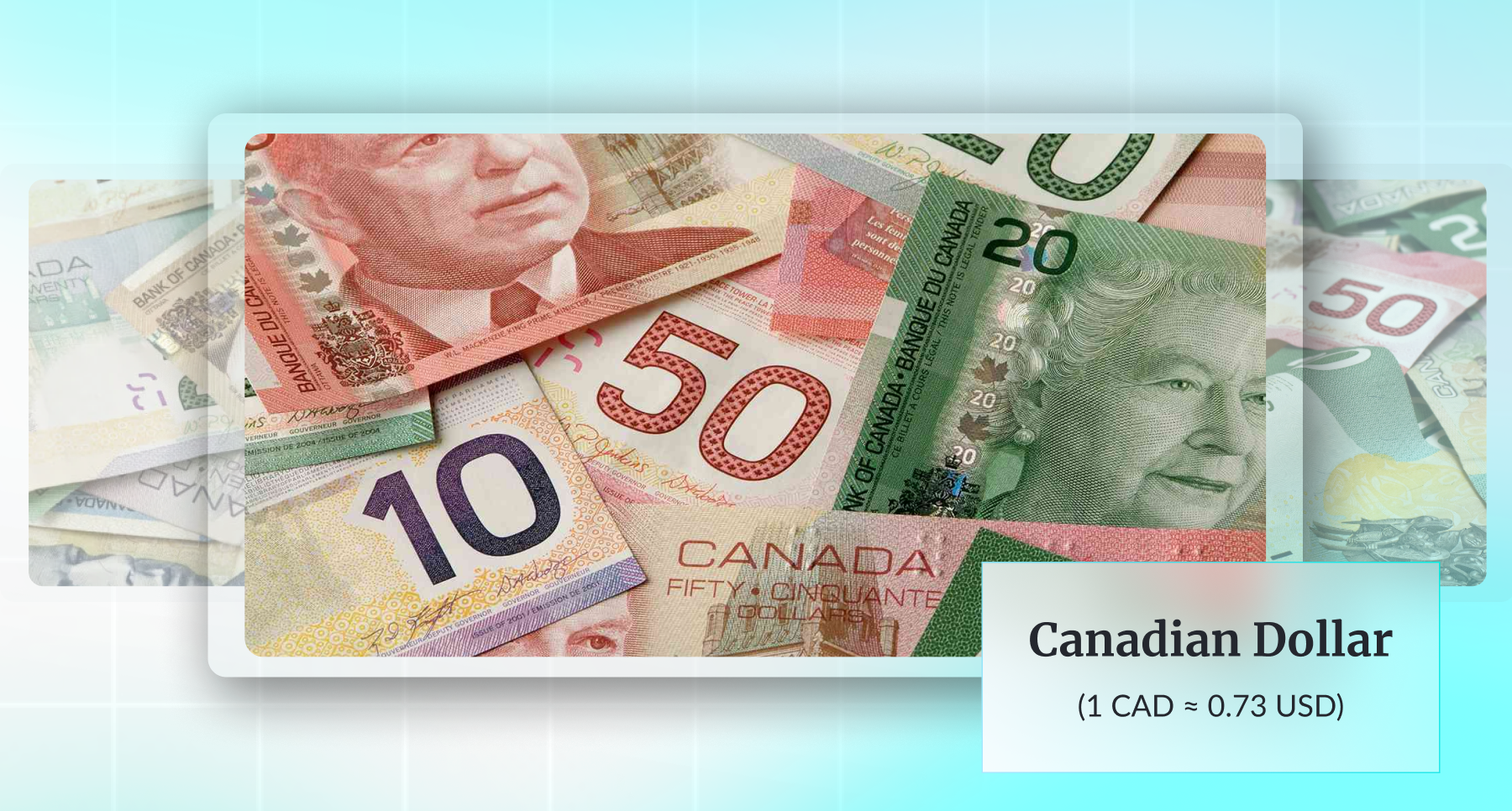
The CAD has maintained its stable value largely due to Canada's resource-rich economy. The country is a major exporter of commodities such as crude oil, natural gas, gold and uranium, causing the CAD to tend to appreciate when global commodity prices rise.
In addition, Canada's financial system is considered one of the safest in the world, contributing to strengthening the CAD's position as a reliable safe haven asset during times of global economic uncertainty.
Top 9: US Dollar (USD) - The most powerful currency in the world
The US dollar (USD) is not only the official currency of the United States, but also the most widely used currency in the world, dominating the international financial system. From global trade, gold prices, oil prices to foreign exchange reserves - USD plays a central role in almost everything.
When the market is volatile, USD often becomes a safe haven for capital flows, reflecting its influence far beyond US borders.
The USD was introduced in 1792 under the US Currency Act, but only truly became the leading global currency after World War II, when the Bretton Woods system was established (1944), which tied the USD to gold and made it the official reserve currency.
Although the US ended the gold standard in 1971, the central role of the USD has not diminished. On the contrary, in global crises such as 2008 or COVID-19, the USD has further affirmed its irreplaceable position in the global economy.
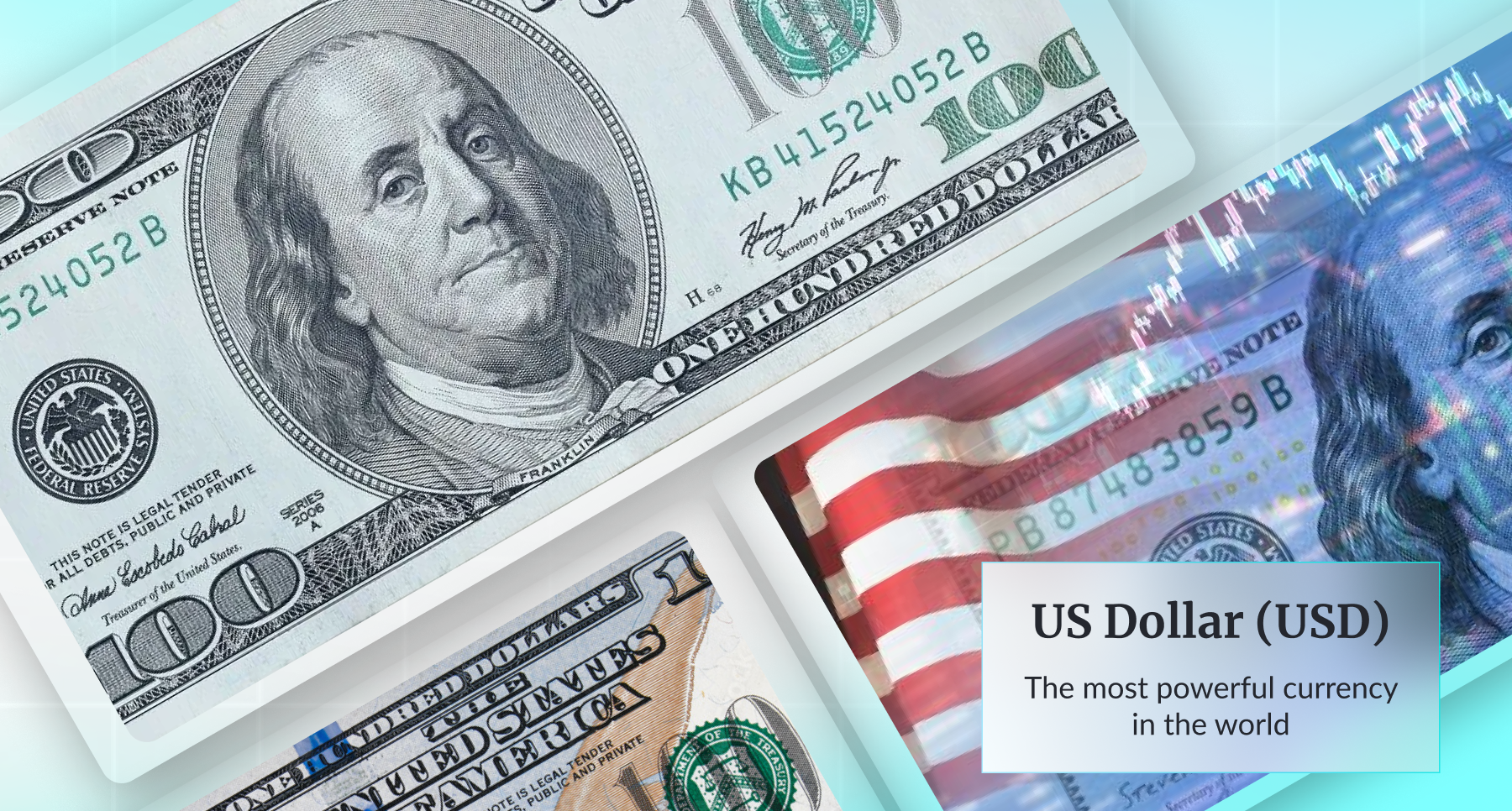
So why does the USD always maintain its value and global influence?
- US economic power: The United States is the world's largest economy with a GDP of over $27 trillion (2024) - the engine of global growth and a leader in technological, financial and military innovation.
- Deep and liquid financial markets: U.S. Treasuries are the world's most widely held safe haven assets, with huge trading volumes and high reliability.
- Faith in American Institutions: The legal system, transparency and independence of the US Federal Reserve (Fed) create an attractive investment environment and strengthen the value of the USD.
- Power in global trade and commodity pricing: The prices of oil, gold, food, and industrial metals are all priced in USD, increasing the demand for USD in international transactions.
- The ripple effects of globalization: Many countries borrow or price contracts in dollars, making the dollar an indispensable link in the global economy.
Here are some key facts about the US dollar:
- USD accounts for 59% of global foreign exchange reserves in 2024.
- Nearly 90% of global foreign exchange transactions involve USD.
- More than 65 countries use the USD as their official currency or exchange rate anchor.
- About 58% of international debt is issued in dollars, including in non-US countries.
Top 8: Euro (1 EUR ≈ 1.08 USD)
The euro is the official currency of the 20 countries of the European Union (EU), which make up the Eurozone economic bloc. According to ECB data in 2024, it is the world's largest single currency by number of member states and is used by more than 346 million people every day.
In the global market, the Euro is the second largest reserve currency, behind only the USD, and is one of the most traded currencies in the foreign exchange market.
The Euro began to be used in electronic transactions from January 1, 1999, and was officially put into circulation as cash on January 1, 2002. The transition from national currencies such as Deutsche Mark (Germany), Franc (France), Lira (Italy)... to a unified currency is a historic turning point, helping to reduce transaction costs, eliminate exchange rate risks within the bloc and promote domestic trade within the European Union.
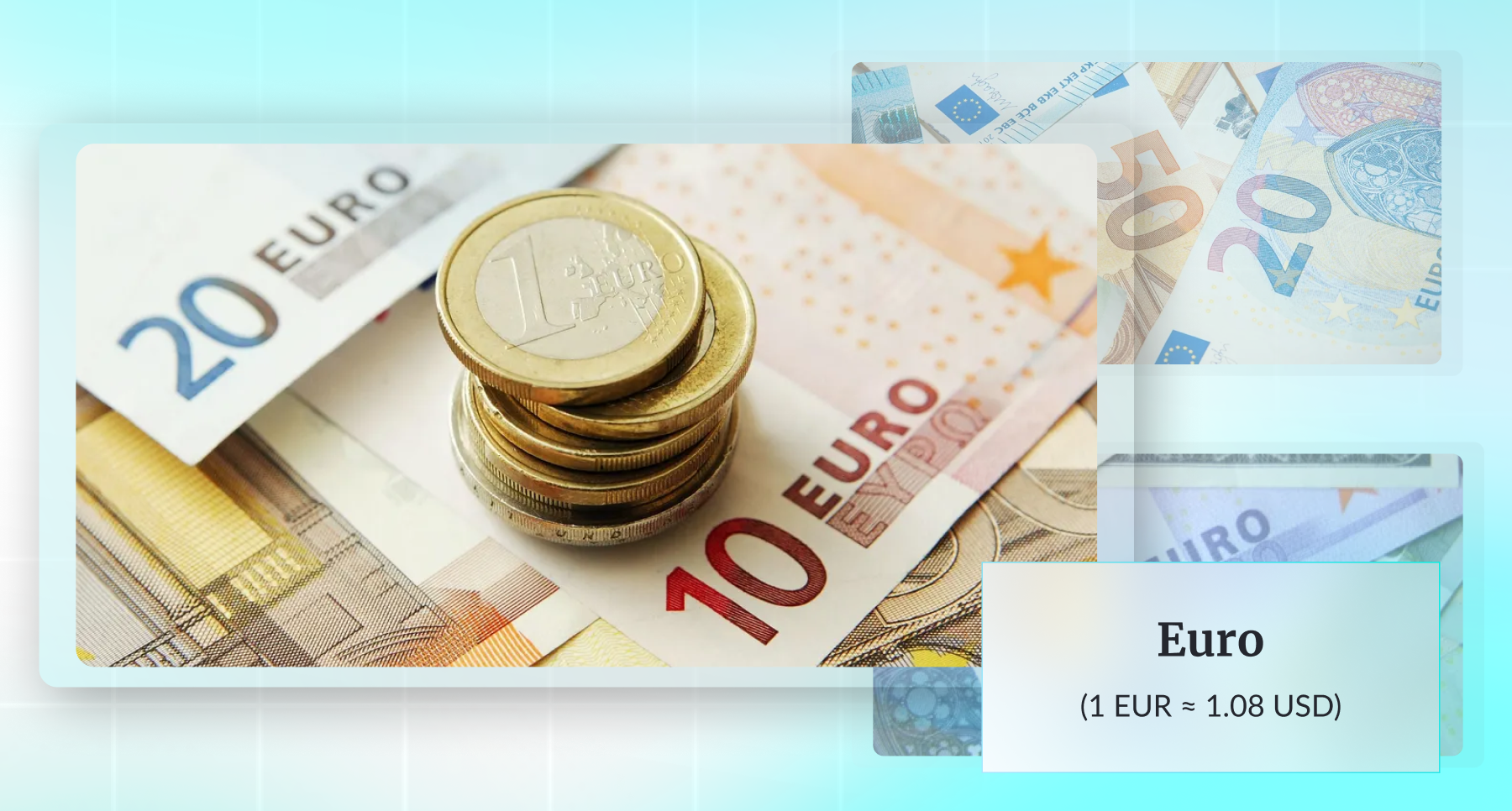
The reasons why the Euro has a high and stable value include:
- Backed by 20 major economies with economic powerhouses such as Germany (the world's 4th largest economy), France and Italy, the Euro maintains its strength and confidence in the long term.
- According to the IMF, this is the world's second largest reserve currency with about 20% of global reserves, the Euro is a reliable choice for central banks in diversifying assets.
- The populous and developed domestic market with more than 346 million people using the Euro every day in consumption, trade and finance activities, creating large and continuous real demand.
- Tight control policy from the European Central Bank (ECB) when pursuing an inflation target of nearly 2%, using tools such as interest rate adjustments and QE (quantitative easing) programs to stabilize the value of the currency.
- The euro is not just a currency, but also a symbol of unity, economic strength and political stability in a region once divided by war and currency conflicts.
Here are some notable data about the EUR:
- According to the BIS, in 2022, the EUR will account for about 30% of the total value of global foreign exchange transactions, second only to the USD.
- It is the official currency of 20 countries but is still used officially or semi-officially in more than 10 countries and territories outside the Eurozone.
- The total GDP of the Eurozone will reach more than 14 trillion USD in 2024, helping to strengthen the economic power behind this currency.
Top 7: Swiss Franc (1 CHF ≈ 1.10 USD)
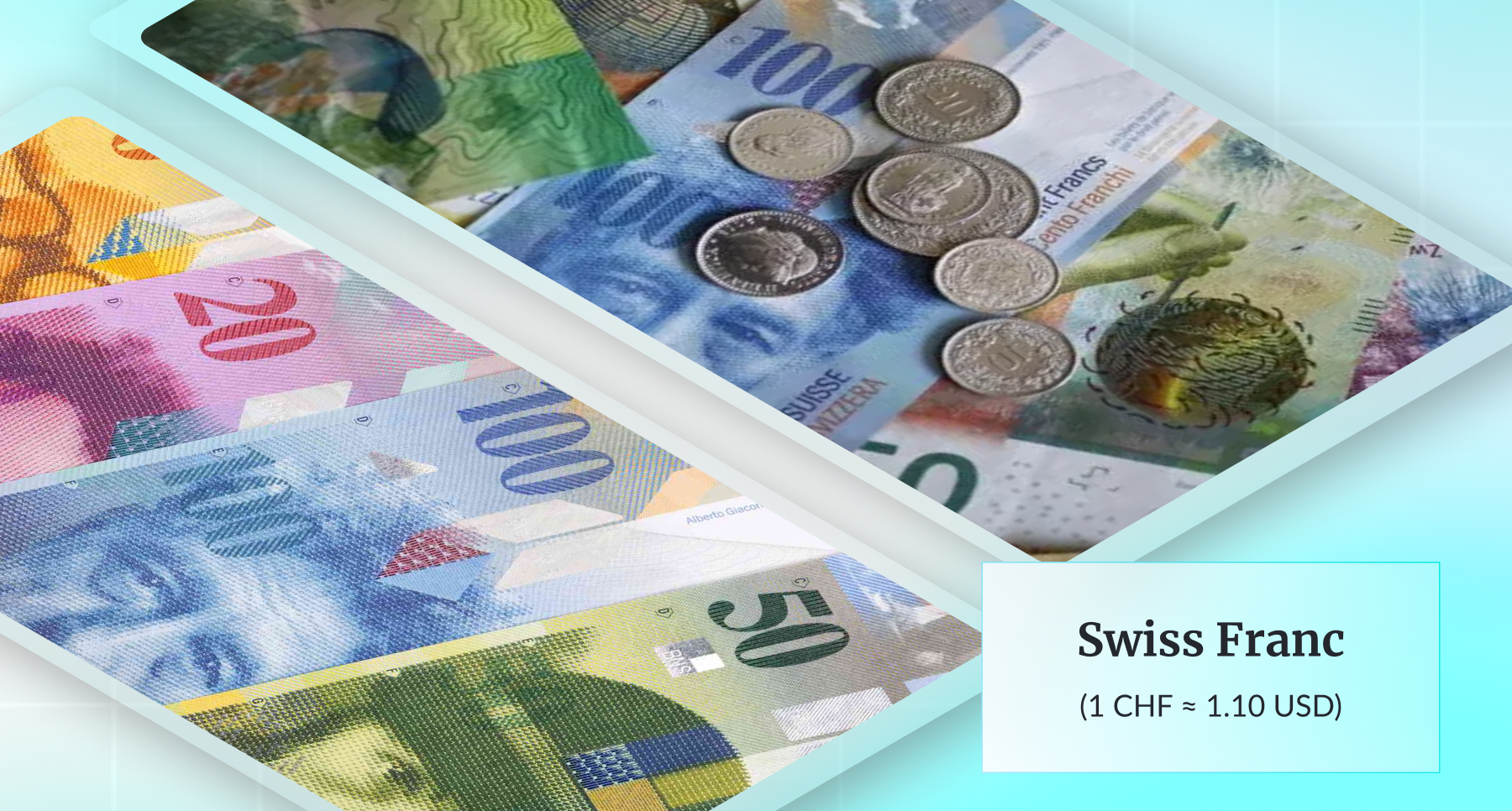
The Swiss Franc (CHF) is the official currency of Switzerland and Liechtenstein. In the global financial markets, the CHF is known as a “safe haven currency” due to its high level of stability, low inflation, and transparent, independent economy. Despite being the currency of a small country, the CHF has a strong influence during times of global instability.
The CHF was introduced in 1850, marking the first time Switzerland had a unified currency system, replacing more than 800 coins issued by the cantons.
The currency has survived many crises, including two World Wars, the 2008 financial crisis and the COVID-19 pandemic, but has maintained strong credibility.
Another important milestone was in 2015, when the Swiss National Bank (SNB) shocked the world when it suddenly removed the floor rate of 1.20 CHF/EUR, causing the Franc to skyrocket - affirming the independence and strength of the CHF in the market.
Why is the CHF highly valued and stable?
- Extremely stable political and legal environment: Switzerland is known for its neutral political system, direct democracy, and transparent judiciary - providing a solid foundation for the national currency.
- Independent and prudent central bank:SNB pursues a conservative monetary policy, prioritizing price stability and controlling the exchange rate to protect the value of the CHF.
- Safe haven in times of volatility: When global markets are volatile, investors often turn to CHF, leading to high demand and an increase in value.
- Export-oriented economy with high added value: Switzerland is known for its pharmaceuticals, luxury watches, and finance - sectors that are less affected by global recessions.
- High confidence from investors and other central banks:CHF is often held in foreign exchange reserves, even though Switzerland is not part of the EU or G7.
Top 6: Cayman Dollar (1 KYD ≈ 1.20 USD)
KYD is the official currency of the Cayman Islands - one of the world's most famous financial havens, home to thousands of global investment funds and banks.

Despite being a British Overseas Territory, the Cayman Islands have had their own independent monetary and fiscal policies, allowing the KYD to maintain its high value for decades.
Issued since 1972, the KYD replaced the Jamaican Dollar and was pegged to the USD at 1 USD = 0.82 KYD, making it the highest-valued currency in the Caribbean region.
Top 5: British Pound (1 GBP ≈ 1.27 USD)
The British Pound (GBP), also known as Pound Sterling, is the official currency of the United Kingdom. It is the oldest currency still in circulation in the world, dating back to the 8th century.
During the British Empire, the GBP was widely used globally. However, after World War II, the decline of the British Empire reduced the influence of the Pound, although it still plays an important role in international transactions
The GBP has gone through many ups and downs but still maintains its position as one of the highest currencies
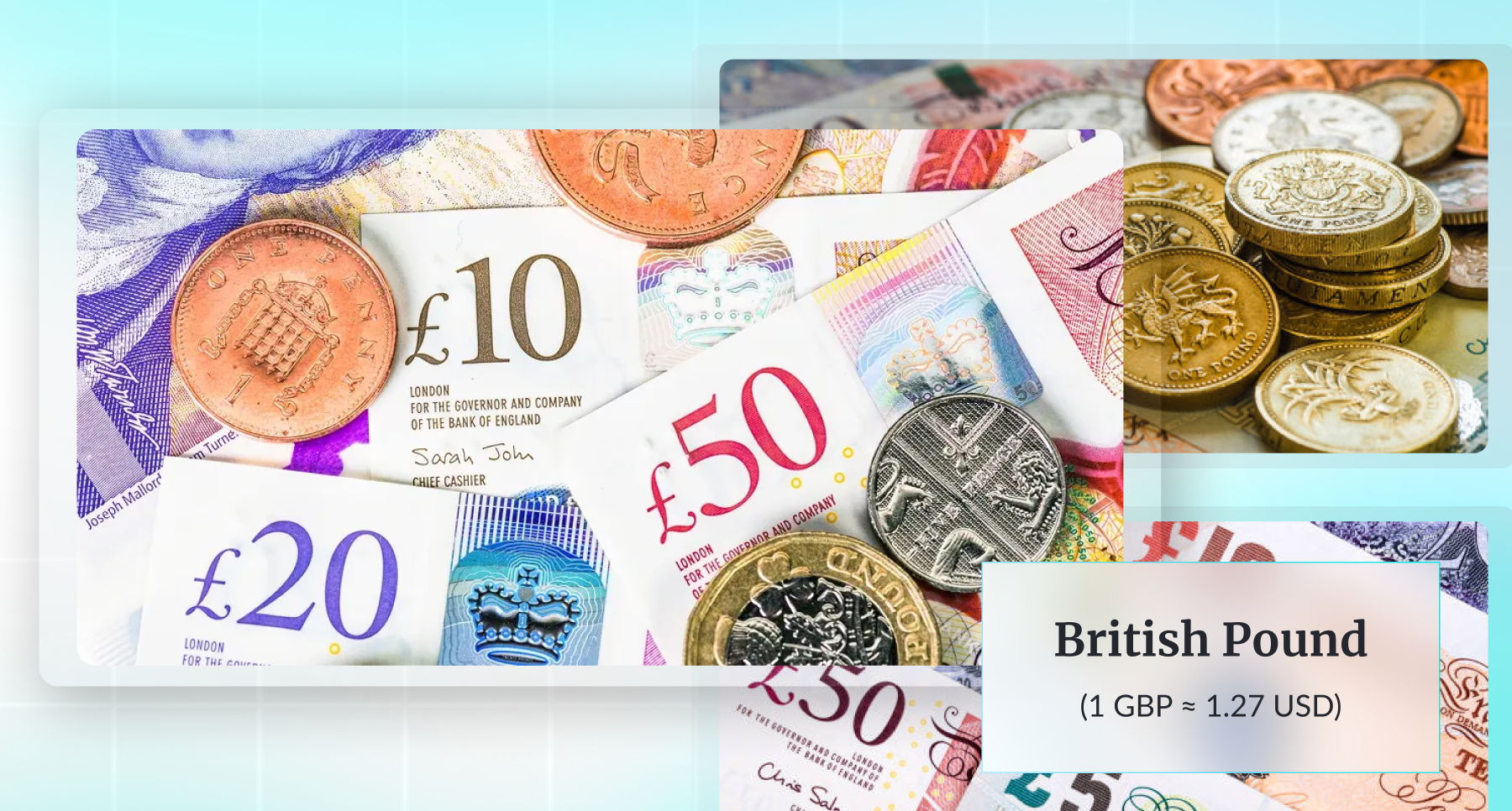
Reasons for the Strong Pound:
- Long history and global reputation: GBP is one of the most legacy currencies, building great trust not only domestically but also in the international market.
- Strong service economy:The UK, with London as the world's leading financial center, is home to many international banks, promoting the development of GBP.
- Well-controlled inflation rate: The Bank of England implements a policy of controlling inflation targeting, helping to maintain the stability of GBP.
- Not joining the Eurozone: Retaining GBP instead of switching to EUR helps the UK maintain complete control over national monetary and financial policy.
Currently, GBP still accounts for about 4-5% of the total value of global foreign exchange transactions, according to SWIFT data. London remains a major financial center and continues to be the headquarters of a series of international banks, maintaining the great influence of the British Pound in global finance.
Top 4: Jordanian Dinar (1 JOD ≈ 1.41 USD)
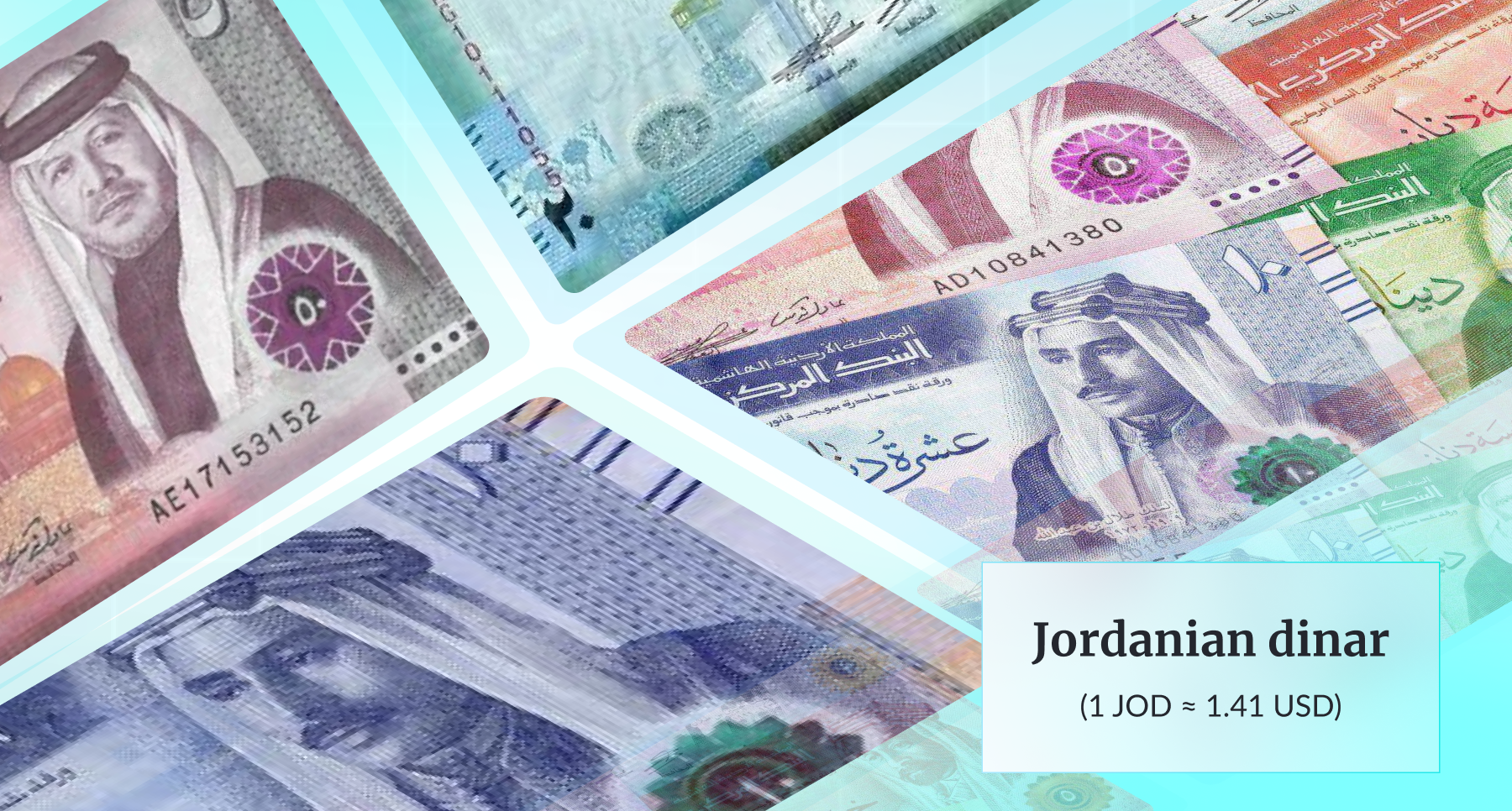
The Jordanian Dinar was introduced in 1950, replacing the Palestinian pound after Jordan gained autonomy. Despite not having large natural resources, the JOD has maintained its high value thanks to a stable monetary policy and a flexible exchange rate against the USD since the 1990s.
To explain why the Jordanian Dinar is stronger than well-known currencies such as the EUR or GBP, we need to consider the following opinions:
- Conservative monetary policy: The Central Bank of Jordan implements a strict money supply control policy to maintain the value of the local currency.
- Fixed exchange rate with the USD since 1995:Contributes to increasing investor confidence and stabilizing the domestic market.
- Support from international organizations:international aid, especially from the IMF, helping to maintain a stable balance of payments.
Thanks to these factors, the Jordanian Dinar has not only maintained long-term stability but also surpassed many major currencies in value. Although the economy is still dependent on aid and facing many regional challenges, tight monetary policy and a commitment to maintaining the exchange rate have helped the JOD become one of the Top 5 strongest currencies in the world today.
Top 3: Omani Rial (1 OMR ≈ 2.60 USD)
The Omani Rial is the official currency of the Sultanate of Oman - a country located in the Arabian Peninsula with a strategic coastal location and significant oil reserves. The OMR is known for its high value and strong stability in the international market.
The Omani Rial was introduced in 1973, replacing the old unit, the Saidi Rial, after Oman modernized its economy. The OMR has been among the world’s most valuable currencies since the 1980s.
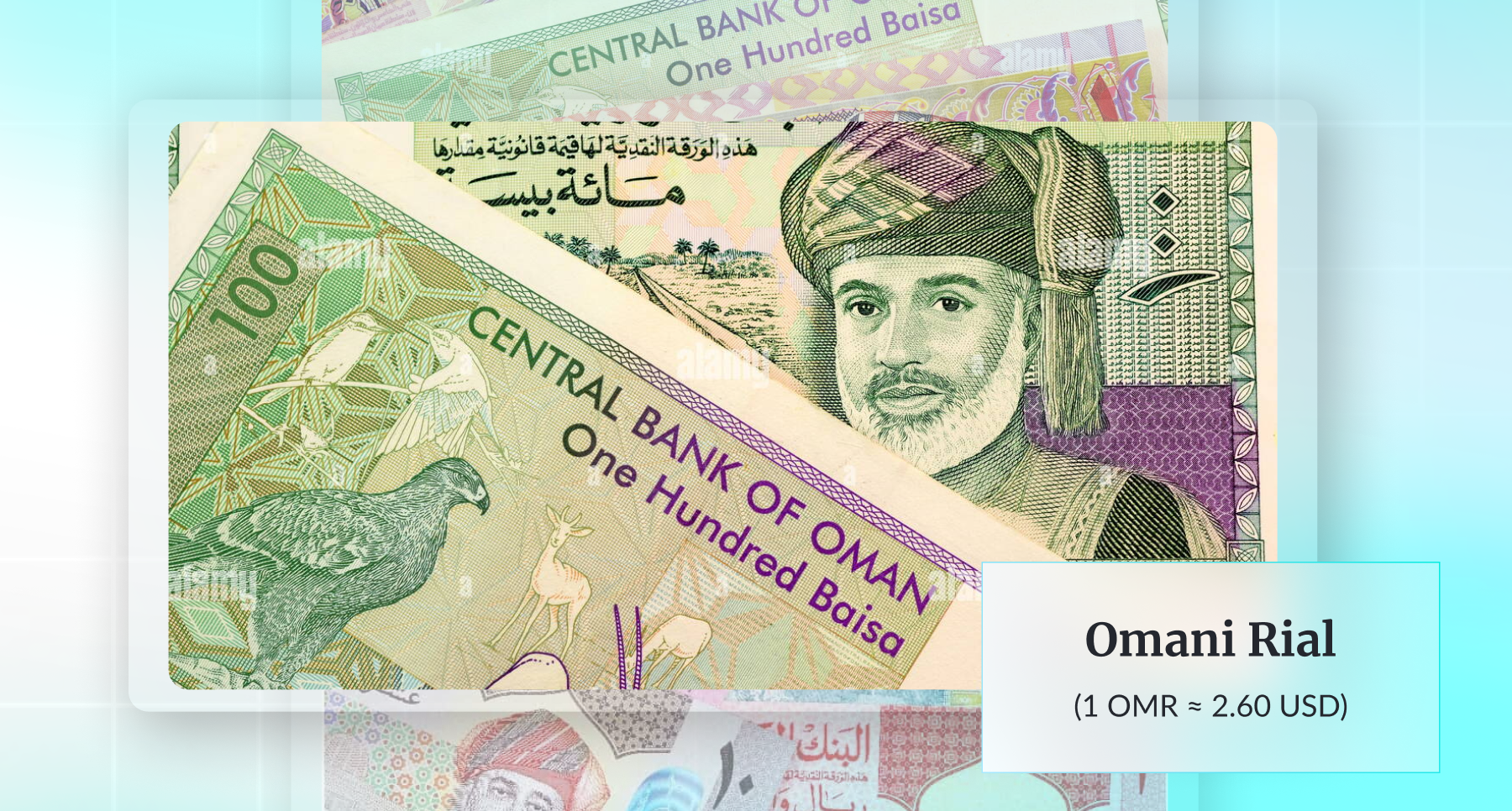
The OMR has enjoyed high value thanks to a stable exchange rate policy with the USD since the 1980s, which has facilitated international trade and maintained confidence in the foreign exchange market.
In addition, the large oil and gas revenues are effectively used by the Omani government to invest in infrastructure, education and health, contributing to building a stable and sustainable economy.
Notably, the Omani Rial is subdivided into 1/1000th of a unit (called a baisa), which means that even a very small amount can be converted accurately. This divisibility shows that the OMR is highly valuable, as just one unit of the currency is equivalent to a large amount of money, reflecting its strong purchasing power and its strong position compared to many other currencies in the region.
Top 2: Bahraini Dinar (1 BHD ≈ 2.65 USD)
The Bahraini Dinar is the currency of the Kingdom of Bahrain, a small archipelago nation in the Persian Gulf. Despite its small size and population, Bahrain is a regional financial center with an economy closely tied to oil, gas, and financial services.
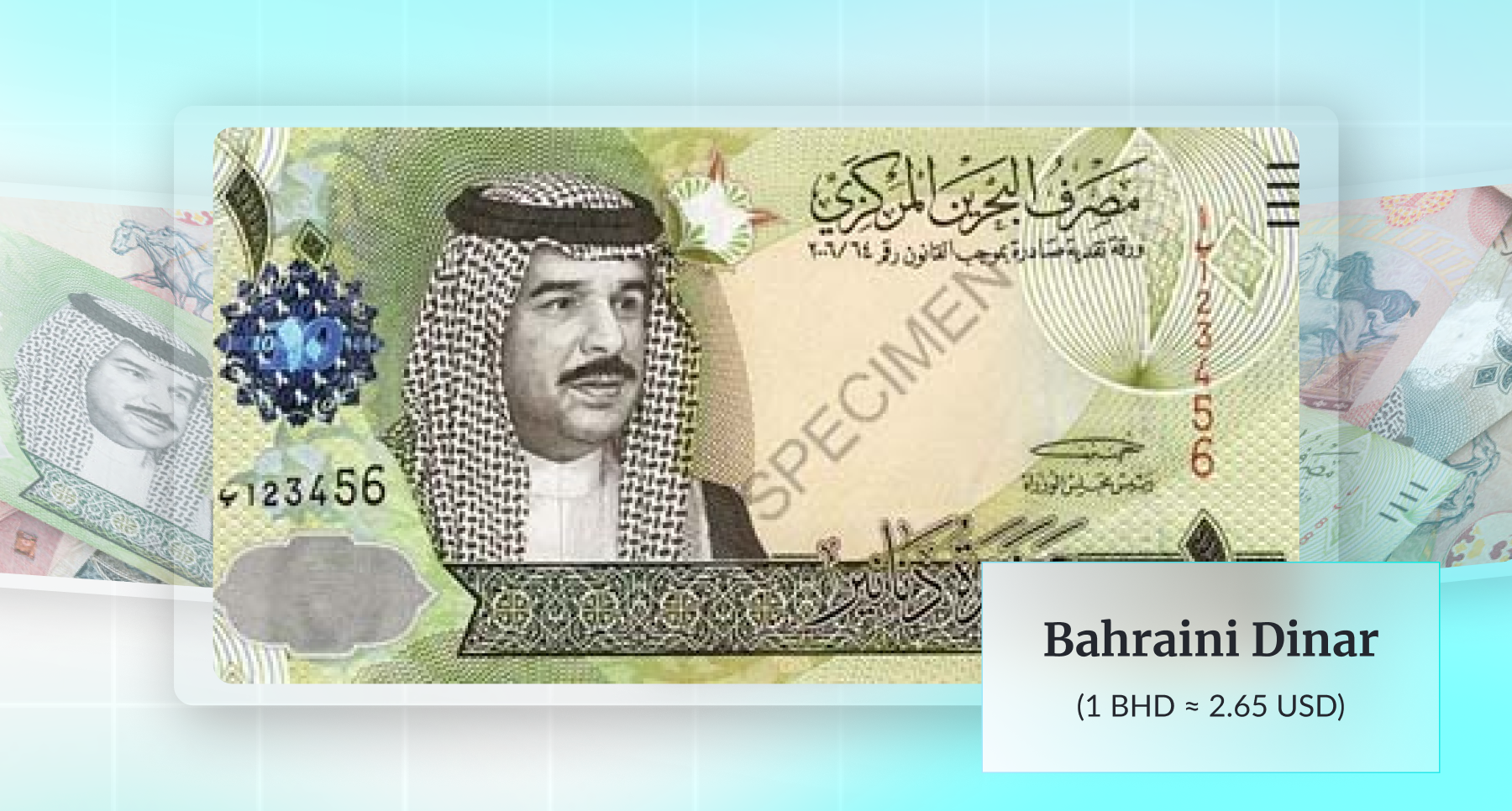
Issued in 1965 to replace the Gulf Rupee, the Bahraini Dinar has become the country's financial symbol. The reasons why the BHD has maintained such a high value include:
- BHD has been pegged at 1 USD ≈ 0.376 BHD for many years, creating a strong belief in stability.
- Despite its small size, Bahrain is a regional financial center thanks to its developed banking system and is a financial investment destination for many large organizations in the Middle East.
- The Bahraini government has a prudent fiscal policy that always prioritizes monetary stability and inflation control.
The high value of the BHD not only reflects the intrinsic strength of the Bahraini economy but also strengthens the confidence of investors and international markets in this currency.
Top 1: Kuwaiti Dinar (1 KWD ≈ 3.26 USD) - The highest currency in the world
The Kuwaiti Dinar is the highest currency in the world, it is the official currency of Kuwait - a small but wealthy country in the Middle East, famous for its huge oil reserves and one of the highest per capita incomes in the world. KWD currently holds the position of the highest valued currency in the world
Introduced in 1961, the Kuwaiti Dinar replaced the Indian Rupee, which had been widely used in the Gulf region. Following the 1990 invasion by Iraq, the KWD was temporarily replaced by the Iraqi Dinar. However, Kuwait quickly restored the KWD after regaining independence - a testament to the country's standing and economic resilience.
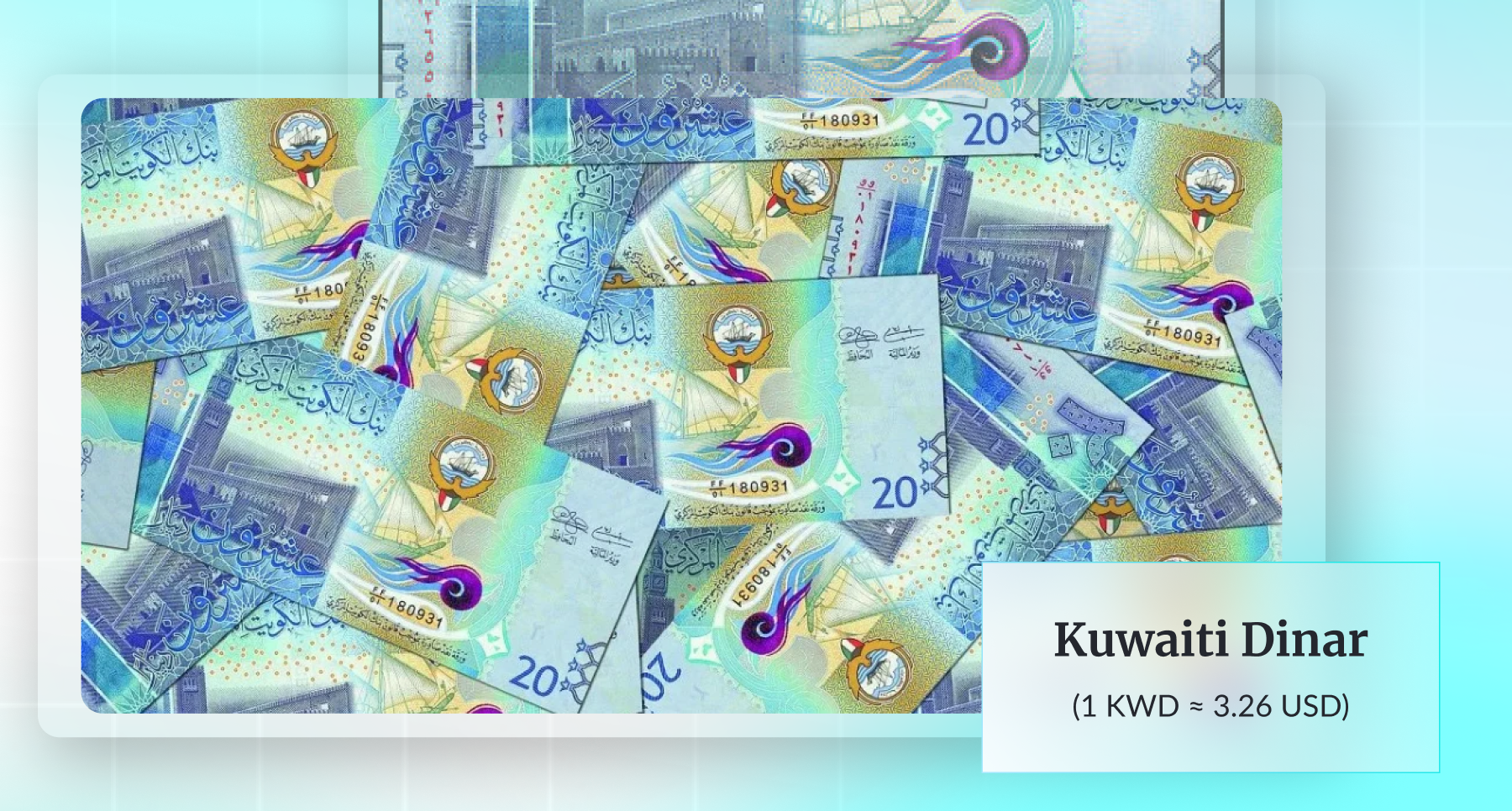
The reasons why KWD is the highest currency in the world are:
- Largest oil income per capita in the world: Kuwait has huge oil reserves, accounting for about 6% of global reserves, helping to generate stable foreign exchange income.
- Flexible exchange rate policy: KWD is pegged to a basket of currencies instead of a single USD, helping to optimize purchasing power and limit negative fluctuations from a single currency.
- Sound finances:The Kuwaiti government has no significant public debt and regularly maintains a budget surplus.
- Effective inflation control: Low inflation helps maintain stable purchasing power of KWD in the long term.
In addition, the international market's confidence in the Kuwaiti Dinar also contributes to strengthening the value of this currency. Due to its stable economy, abundant foreign exchange reserves and strong banking system, KWD is often considered a "safe" currency in the Middle East region
Furthermore, the Central Bank of Kuwait’s prudent monetary policy plays an important role in maintaining the KWD’s position. Instead of excessive easing to stimulate growth, Kuwait focuses on macroeconomic stability, thereby creating a reliable and sustainable financial environment.
Thanks to the combination of oil resources, effective financial management, and stable monetary policy, the Kuwaiti Dinar not only has high value but also becomes a symbol of the country's economic stability and strength in the international arena.
Hopefully the above article has provided readers with useful information about the world's highest valued currencies. If you are learning about the Forex market and want to make a profit from this market, CPT Markets is the number one choice for you to start your trading journey.
Recent Articles
Frequently Asked Questions
No, because currencies like KWD or BHD have high exchange value, but:
- - Thin trading market, low liquidity.
- - Limited scope of use (mostly domestic use).
- - Often associated with fixed exchange rate policies.
If you are a forex trader, choose major pairs such as EUR/USD, USD/JPY, GBP/USD to take advantage of high liquidity and clear volatility.
According to statistics from the Bank for International Settlements (BIS), the most traded currencies include: USD (88% of transactions), EUR (30%), JPY (17%), GBP (13%). In addition, AUD, CAD, CHF are also in the G10 group with high trading volume.
At CPT Markets, you can trade these pairs with spreads starting from just 0.1 pips, lightning-fast execution speeds, and support for a wide range of technical analysis tools.
USD has global influence not because of its high exchange value, but thanks to the following factors:
- - The world's major reserve currency.
- - Accounts for more than 88% of global foreign exchange transactions.
- - Used to price gold, oil, wheat, and a host of other strategic commodities.
- - The US financial system is deep, transparent, and trustworthy.
CPT Markets connects directly with Tier 1 liquidity providers so you can trade USD-related currency pairs with competitive spreads, deep liquidity and smooth pricing.
CPT Markets outstanding strengths for forex traders include:
- - FCA (UK) license - one of the most prestigious regulatory bodies in the world, and many other licenses.
- - Low spread - instant order execution.
- - Flexible leverage up to 1:500
- - MT4/MT5 platform integrated with advanced analysis tools, EA & copy trade.
- - 1-1 support, fast deposit and withdrawal with diverse methods.
Whether you are a new trader or a professional, CPT Markets has the right solution to help you trade effectively in the global currency market.
Step 1: Open an account at CPT Markets (You can use Demo if you have no trading experience).
Step 2: Deposit money into your trading account and explore the MT4/MT5 platform.
Step 3: Start trading with major currency pairs that are stable and easy to analyze such as EUR/USD, USD/CHF, AUD/USD, USD/JPY...
In addition, we regularly organize online seminars on the market, including knowledge, experience and comments and predictions of many experts on the foreign exchange market. Just leave your email on the homepage or start Live chat and you will be supported by our CPT Markets team.
